
Basic Forest Fire Suppression Course - Online Lessons
LESSON 3 - EFFECTS OF WEATHER, TOPOGRAPHY AND FUELS ON FIRE BEHAVIOR
Volume refers to the amount of fuel available for combustion. The greater the volume of fuel available, the more intensely a fire will burn.
It is important to remember that not all fuel will necessarily be consumed by fire. Factors such as past and present weather, seasonal effects and the type of fuel will determine how much of the fuel will burn.
Fuel type refers to broad forest fuel groups, i.e. Softwood, Hardwood, Mixed wood, Slash, Grass
Each of these fuel types will exhibit unique burning conditions and need to be assessed individually.
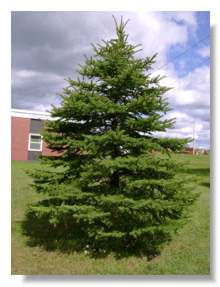 Softwood
Softwood
(trees containing evergreen needles), because of physical attributes and stand composition will burn aggressively and should be regarded with caution under certain circumstances . It`s supply of needles provide an abundance of fine fuels and in a stand situation will result in fire`s ability to climb from the ground to the crown.
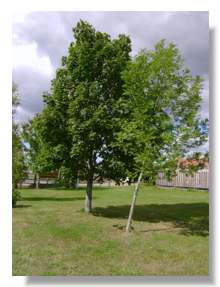 Hardwood
Hardwood
(broad leafed trees) trees will exhibit burning conditions which are less aggressive then softwood and under most circumstances will carry a lower intensity surface fire under the canopy. Green leaves contain moisture and do not have the resinous quality that can be found in softwood. Fire managers will look for hardwood stands as fuel breaks which have some containment value.
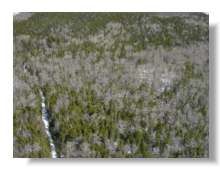 Mixed wood
Mixed wood
(combination of softwood and hardwood) stands will provide a variety of burning conditions which are mostly dependent on the softwood component. A stand with a higher percentage of softwood (70 - 75%) will begin to resemble conditions burning in pure softwood stands. Stands with lesser component of softwood could exhibit some torching (several softwood trees crowning at once) however this will not last if hardwood is next to burn. Stands with a lesser component of softwood will tend to exhibit burning conditions resembling a hardwood stand.
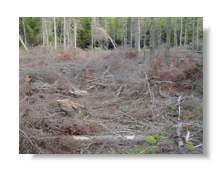 Slash is a term used to describe the residue from a harvesting operation (limbs, tree tops, stumps and the root system). Burning conditions can be extremely intense because of the volume of fuels on the surface and may not spread as fast because of the compacted fuel quality.
Slash is a term used to describe the residue from a harvesting operation (limbs, tree tops, stumps and the root system). Burning conditions can be extremely intense because of the volume of fuels on the surface and may not spread as fast because of the compacted fuel quality.
Grass is a seasonal fuel that exhibits extreme burning conditions in the early spring. 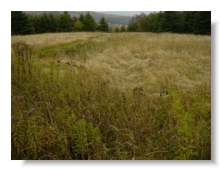 Shortly after snow cover has been removed, dead and cured grasses are exposed to additional sunlight which begins the warming and drying process. Since grass is a fine fuel it will require very little radiant heat to begin the combustion process. Grass fires can be a problem from the time snow cover leaves the ground until about mid May in Nova Scotia. Burning conditions in this fuel can exhibit high intensity levels and very rapid spread rates. During initial attack, concern should be given to these conditions mainly because of the speed of the fire.
Shortly after snow cover has been removed, dead and cured grasses are exposed to additional sunlight which begins the warming and drying process. Since grass is a fine fuel it will require very little radiant heat to begin the combustion process. Grass fires can be a problem from the time snow cover leaves the ground until about mid May in Nova Scotia. Burning conditions in this fuel can exhibit high intensity levels and very rapid spread rates. During initial attack, concern should be given to these conditions mainly because of the speed of the fire.